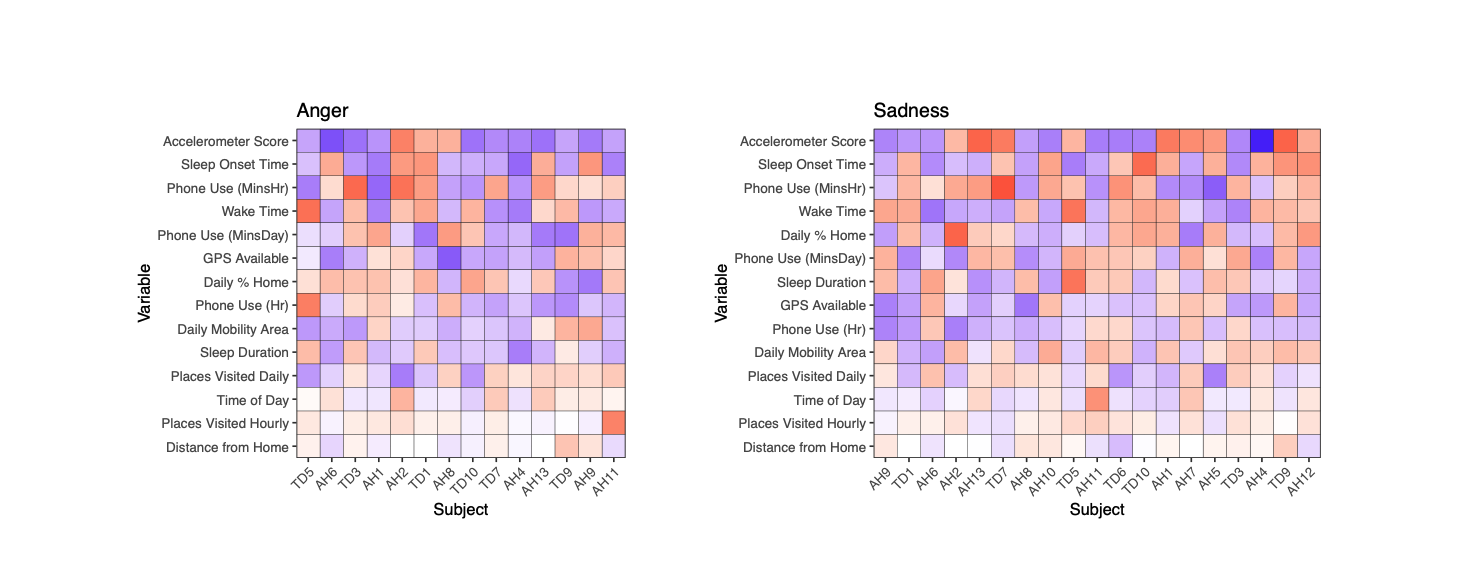Adolescence is characterized by profound change, including increases in negative emotions. Approximately 84% of American adolescents own a smartphone, which can continuously and unobtrusively track variables potentially predictive of heightened negative emotions (e.g. activity levels, location, pattern of phone usage). The extent to which built-in smartphone sensors can reliably predict states of elevated negative affect in adolescents is an open question.
For more information:
Adolescent participants (n = 22; ages 13–18) with low to high levels of depressive symptoms were followed for 15 weeks using a combination of ecological momentary assessments (EMAs) and continuously collected passive smartphone sensor data. EMAs probed negative emotional states (i.e. anger, sadness and anxiety) 2–3 times per day every other week throughout the study (total: 1145 EMA measurements). Smartphone accelerometer, location and device state data were collected to derive 14 discrete estimates of behavior, including activity level, percentage of time spent at home, sleep onset and duration, and phone usage.
A personalized ensemble machine learning model derived from smartphone sensor data outperformed other statistical approaches (e.g. linear mixed model) and predicted states of elevated anger and anxiety with acceptable discrimination ability (area under the curve (AUC) = 74% and 71%, respectively), but demonstrated more modest discrimination ability for predicting states of high sadness (AUC = 66%).
To the extent that smartphone data could provide reasonably accurate real-time predictions of states of high negative affect in teens, brief ‘just-in-time’ interventions could be immediately deployed via smartphone notifications or mental health apps to alleviate these states.
